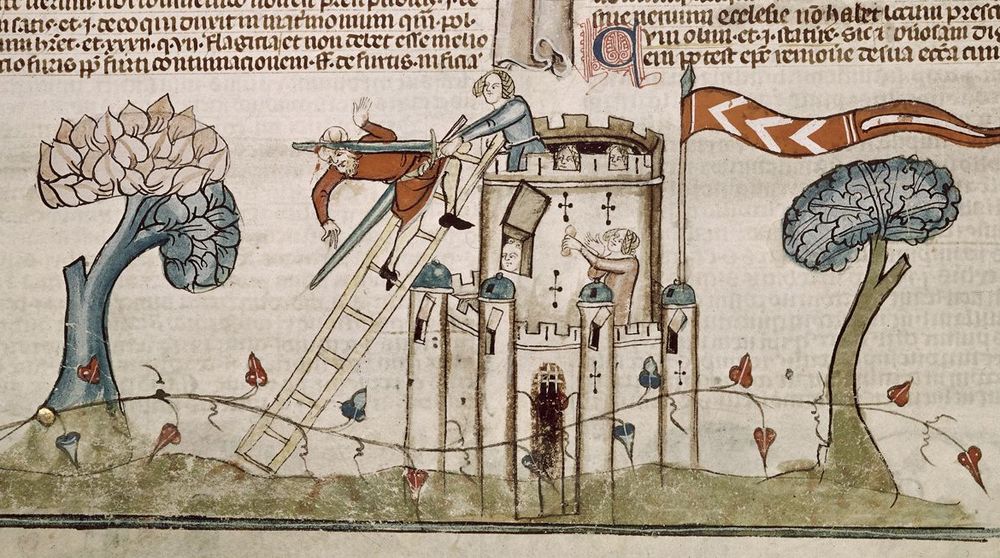
Background picture is of Nanaimo.
Portrait is from the Luttrell Psalter.

Sometimes medieval criminal court records reveal instances in which localities and/or individuals took the punishment of crime into their own hands. The castration case of Tom, son of Leofwin, from the year 1202 is one such case. 🧵1/5
Sometimes medieval criminal court records reveal instances in which localities and/or individuals took the punishment of crime into their own hands. The castration case of Tom, son of Leofwin, from the year 1202 is one such case. 🧵1/5

Sometimes medieval criminal court records reveal instances in which localities and/or individuals took the punishment of crime into their own hands. The castration case of Tom, son of Leofwin, from the year 1202 is one such case. 🧵1/5
For more info, read this ⬇️

For more info, read this ⬇️
In other words, it’s difficult to finish articles.

In other words, it’s difficult to finish articles.
Norman Bridwell
Roald Dahl
Beatrix Potter
Mercer Mayer
Robert Munsch
Dickens
Le Carre
Iain (M) Banks
Le Guin
Me
Clive Barker
Brian Lumley
Robert Jordan
Stephen King
J.R.R. Tolkien
Norman Bridwell
Roald Dahl
Beatrix Potter
Mercer Mayer
Robert Munsch
academic.oup.com/histres/arti...

academic.oup.com/histres/arti...


~$70,000/year (CDN); requirement to teach 2 semester-long courses per year; teaching experience & scholarly publications are an asset.
Per donor’s bequest, “only candidates who identify as women are eligible”.


~$70,000/year (CDN); requirement to teach 2 semester-long courses per year; teaching experience & scholarly publications are an asset.
Per donor’s bequest, “only candidates who identify as women are eligible”.
~$70,000/year (CDN); requirement to teach 2 semester-long courses per year; teaching experience & scholarly publications are an asset.
Per donor’s bequest, “only candidates who identify as women are eligible”.


~$70,000/year (CDN); requirement to teach 2 semester-long courses per year; teaching experience & scholarly publications are an asset.
Per donor’s bequest, “only candidates who identify as women are eligible”.

There’s a 30% off discount code in the comments.
manchesteruniversitypress.co.uk/9781526165893/

There’s a 30% off discount code in the comments.

But also, committee work is difficult because it requires members who will listen, are open minded to possible changes, and don’t think only about themselves.
But also, committee work is difficult because it requires members who will listen, are open minded to possible changes, and don’t think only about themselves.
1) Troop Beverly Hills
2) Rookie of the Year
3) The Devil Wears Prada, and
4) 300.

1) Troop Beverly Hills
2) Rookie of the Year
3) The Devil Wears Prada, and
4) 300.


And no, this is not related to students; my students are great.
And no, this is not related to students; my students are great.

"Come on; you know no Tennyson. You only know Sendak: I told you once, I told you twice are seasons of the year are nice for eating chicken soup with rice".

"Come on; you know no Tennyson. You only know Sendak: I told you once, I told you twice are seasons of the year are nice for eating chicken soup with rice".

I'm so excited to read this!
Link: www.cambridge.org/core/books/l...
I'm so excited to read this!
Link: www.cambridge.org/core/books/l...



